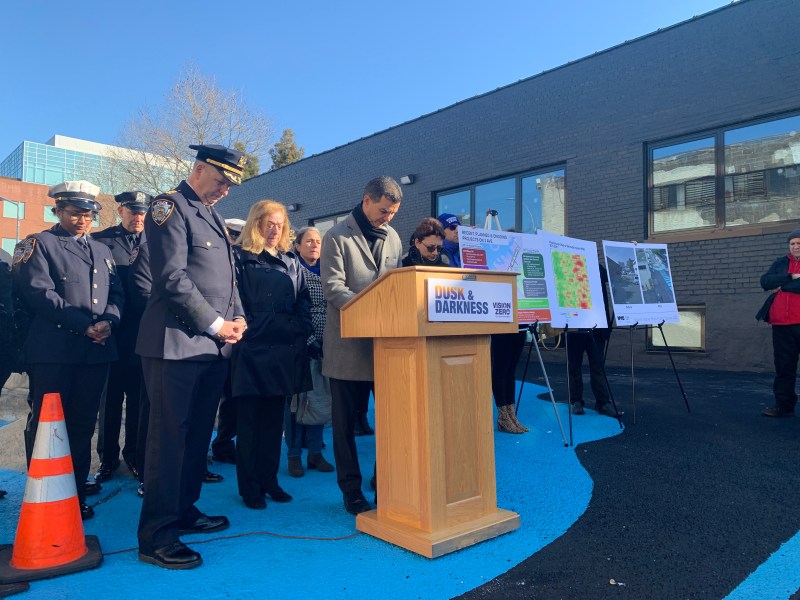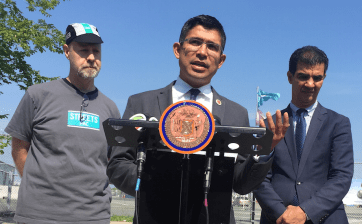BREAKING: City to Slow Down Drivers on Third Avenue in Brooklyn


Closing this barn door should at least keep some horses inside.
Responding to a spate of deaths along Brooklyn’s Third Avenue, the city Department of Transportation announced on Monday that it would reduce the speed limit along the deadly corridor between 65th Street and Hamilton Avenue to 25 miles per hour from the current 30.
And DOT also said it would begin construction in 2020 of the first phase of a long-awaited two-way protected bike lane between Hamilton Avenue and 29th Street.
“It’s been a very tragic year on Third Avenue,” Commissioner Polly Trottenberg said, citing the five fatalities along the roadway this year. (Left unsaid were the 510 total crashes so far this year, resulting in 181 total injuries, including 10 cyclists and 13 pedestrians, on Third Avenue between 20th Street and 58th Street, according to Crash Mapper.)
Trottenberg announced the speed limit decrease one day after activists rallied on Sunday near the scene of the killing of Brendan Gill on Thursday, part of a particularly bloody 48 hours in the city when six pedestrians were killed overall. She said the speed limit change would be put into effect with new signs and recalibrated speed cameras in the first few weeks of the new year.

“Third avenue is a very challenging corridor,” she said. “It’s industrial. It has trucks coming on and off the Gowanus, but it’s increasingly residential. And increasingly a place with a lot of pedestrian destinations. We will be out there in force with the Police Department and automated enforcement and really want to send a message to please drive carefully along that stretch.”
Later in the press conference in Long Island City, several members of the TV press complained that pedestrians cause crashes because they don’t always pay attention (which is not backed up by facts) and that drivers are becoming more aggressive as a result of the city’s installation of bike lanes and other traffic calming strategies (despite evidence that shows such strategies make roadways safer).
Council Member Ydanis Rodriguez was particularly enraged by that line of questioning.
“When people ask, ‘What about pedestrians who are distracted?’ I remind them that most New Yorkers who are killed in a crash died because a driver was driving over the speed limit or passed a stop sign or a red light, or he was drunk,” said Rodriguez, who chairs the Council’s Transportation Committee. “Drivers are not taking the necessary precautions. … The individuals behind the wheel of something that weighs tons has most of the responsibility.”
Trottenberg agreed.
“Everyone has a role to play, and I hear motorists say, ‘Pedestrians are jumping into the street,’ well I have the same message as the chairman: New York City streets are busy. They can be chaotic. The unexpected can happen. But you, behind the wheel, if you’re going at a safe speed and a collision happens, everyone is much more likely to walk away. That’s the holiday message: whether you feel you’re in the right or you’re in the wrong, the power is yours. Go at a nice, slow speed.”
